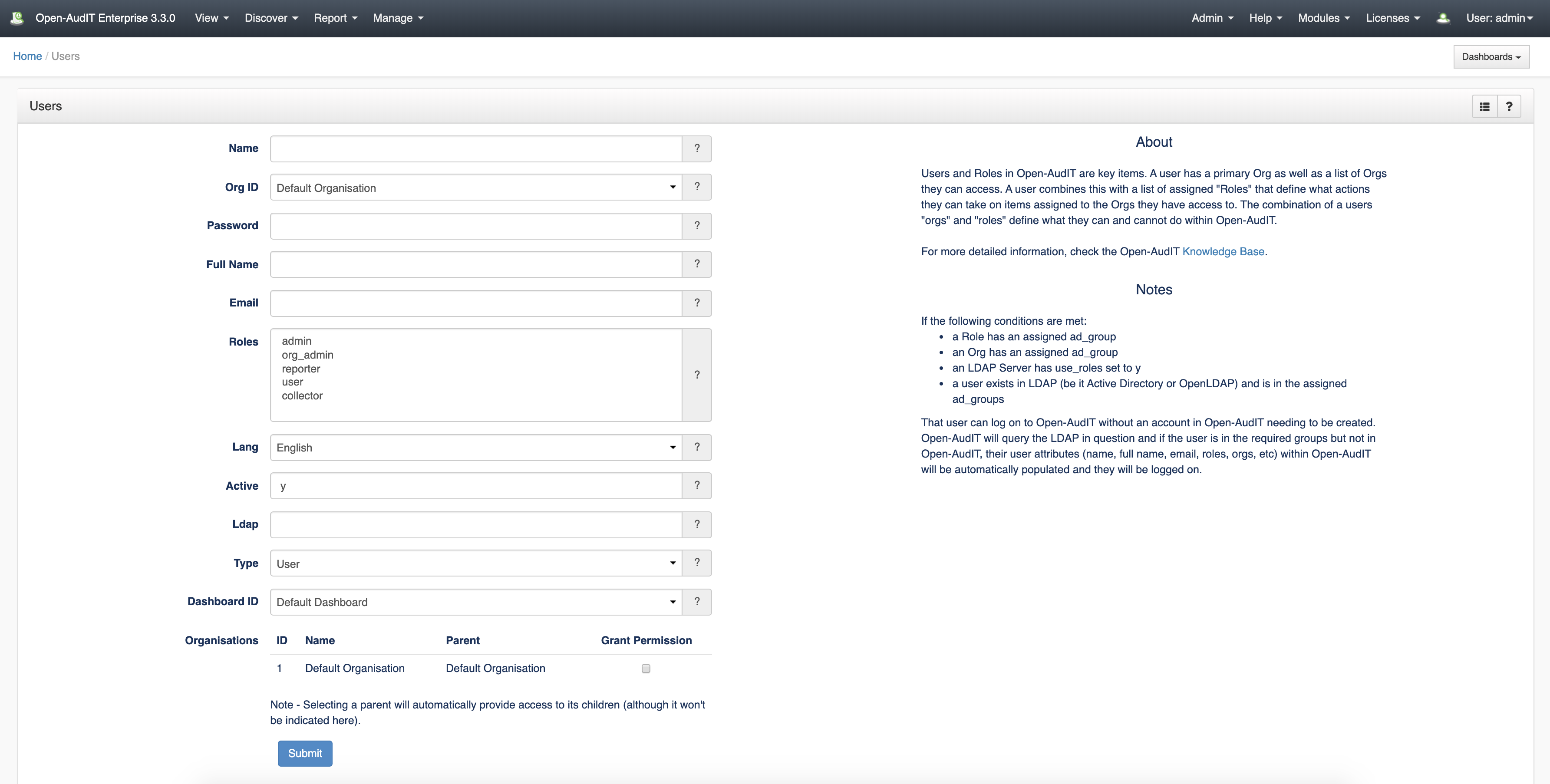Introduction
The User endpoint allows you to manage user accounts within Open-AudIT.
How Does it Work?
A user has a primary Org as well as a list of Orgs they can access. A user combines this with a list of assigned 'Roles' that define what actions they can take on items assigned to the Orgs they have access to. The combination of a users 'orgs' and 'roles' define what they can and cannot do within Open-AudIT.
Creating a User Entry
Join Paul McClendon, an Opmantek Support Engineer, as he demonstrates how to create a new user in Open-AudIT
A user entry can be created using the web interface if the current user logged in has a role that contains the user::create permission. Go to menu: Manage -> Users -> Create Users. Also can be created from the Users View, using the "+" button.
To add a new user to Open-AudIT you have to provide the details of that person, assign the organization, select the relevant Roles (multiple roles can be selected), select if the user is active or not, etc. In addition, you must grant permission to that user to access one or more organisations. It is important to notice that selecting a parent organization will automatically provide access to its children.
View Users Details
Go to menu: Manage-> Users -> List Users.
Database Schema
The database schema can be found in the application is the user has database::read permission by going to menu: Admin -> Database -> List Tables, then clicking on the details button for the table.
API / Web Access
You can access the collection using the normal Open-AudIT JSON based API. Just like any other collection. Please see The Open-AudIT API documentation for further details.


